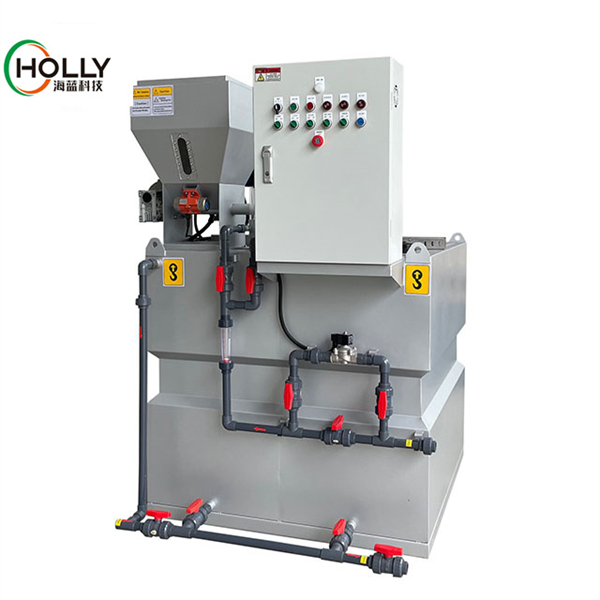Polymer Dosing System
Polymers preparation and dosing system, is an automatic continuous process, dedicated for the preparation of chemicals used in the water and wastewater treatment. It dissolve dry chemical/polymer powder or can be customized to dilute concentrated solutions.
Feature:
Polymer Dosing System,Chemical dosing system,Powder dosing system,Chlorine Dosing System ,PAM Polymer Preparation unit YIXING HOLLY TECHNOLOGY CO.,LTD. , https://www.watertreatmentmachine.com
Recently, the reporter learned that 47-year-old Yang Ming (a pseudonym) because of the brain atrophy caused by the paralyzed, moving fingers this little action for Yang Ming is more difficult than the sky. The doctor took the initiative and designed a spinal pacemaker for him to gradually recover some of his body's functions. It is reported that this type of spinal pacemaker therapy has not been reported in domestic and foreign literature and is the first time it has been used in clinical practice.
The reporter learned that Yang Ming suffered a brain injury four years ago in a car accident, which caused brain atrophy and severe dyskinesia. There has been no obvious improvement in the condition in the past 4 years.
Last month, Yang Ming went to Zhongnan Hospital for an examination. Zhang Jie speculated that the problem was on the spinal cord. Zhang Jie successfully completed the first brain pacemaker surgery in the province last year. Zhang Jie boldly guessed that if a pacemaker is implanted in Yang Ming’s spinal cord to improve blood supply to the brain, it may be able to relieve the symptoms of brain atrophy and consult data. At present, there is no attempt to treat brain atrophy with a pacemaker. Get their support.
On the 8th of this month, Zhang Jie performed an operation for Yang Ming. He cut a small mouth in Yang Ming's neck, implanted a 4 cm long, 6 mm wide electrode outside the epidural cord, and then opened a subcutaneous "tunnel" from the neck to the right chest and let the wires pass through. In the "tunnel," one end was connected to the electrode, the other to the pacemaker, and finally the pacemaker was installed under Yang Ming's right chest.
One week after the operation, Yang Ming recovered well. The doctor opened the switch of the pacemaker with a remote control device. The pacemaker began to release current, stimulated the spinal cord, and increased blood supply to the brain. In recent days, Yang Ming’s family was pleasantly surprised to find that Yang Ming’s stiff left hand and left foot slowly became slack and he could do small movements. He would swallow himself when he was eating.
This is the world's first clinical application of spinal pacemakers. It is also a valuable experience and a new discovery in the medical community. If this technology can master and mature applications, it can bring new life to patients who have long been unconscious. However, this technology is not yet mature and it needs to be studied and improved.


1, Dosing, dissolving and feeding function are integrated, full automatic operation. Well designed dosing and heating device can reduce polymer caking;
2, Polymer and water inletting are adjustable, All concentration of the liquid can be reached according to your needs. The machine will remind to add polymer when the polymer reaches low level;
3, Optional: Vacuum feeding machine, Online dilution system; Tank material: SS304 or SS316L, Polypropylene, FRP, etc.
Wuhan doctors "brave" design of spinal pacemaker
At present, the application of pacemakers in China is very mature. Pacemakers actually refer to the entire pacemaker system. The pacemaker system consists of a pacemaker, pacing electrode leads, and a program controller. The pacemaker and pacing electrode wires are implanted into the human body. Pacemakers consist of circuits and batteries installed in metal boxes. Pacemakers send tiny electrical pulses to the heart when needed. Pacing The electrode leads consist of insulated wires that are responsible for sending tiny electrical impulses to the heart to stimulate the heart beat. Brain pacemakers are common, but there is no precedent for the application of spinal pacemakers.